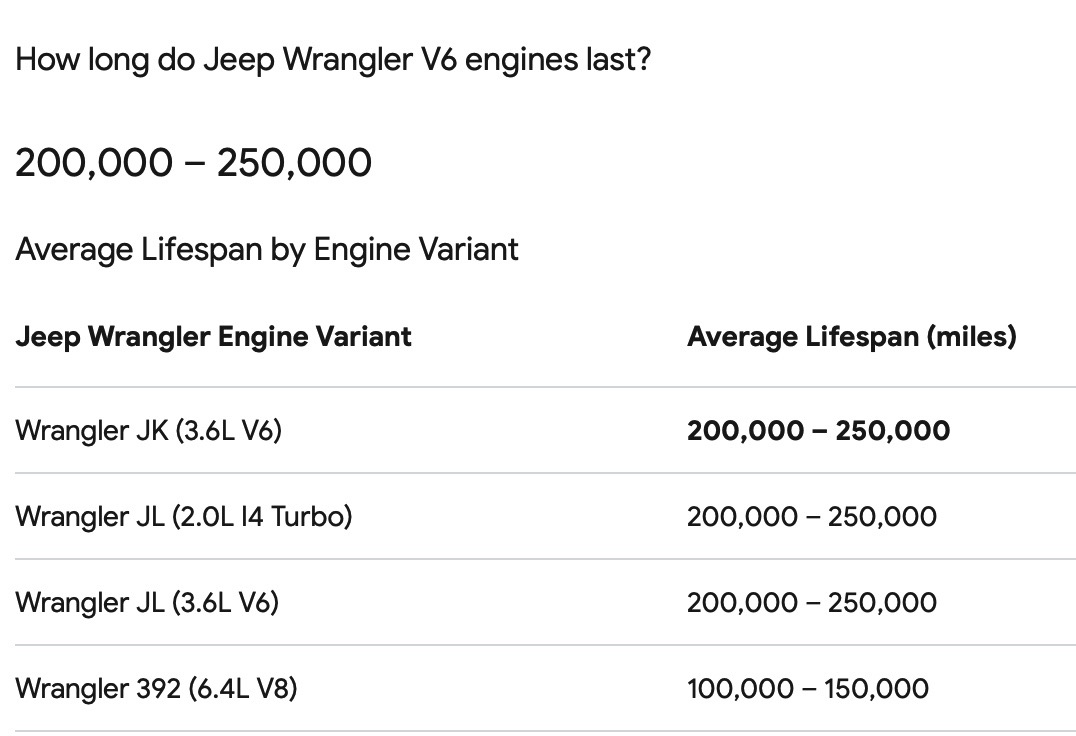The Jeep Wrangler 392 Is A BEAST! But Did You Know It Lags in Longevity Compared to Other Wrangler Engines?
Posted on 11/10/2024 by Agent001
The Jeep Wrangler 392, equipped with a 6.4L V8 engine, has a notably shorter lifespan compared to other Wrangler engines, which typically last between 200,000 to 250,000 miles. Several factors might contribute to this disparity:
1. Power and Stress: The 392's V8 engine produces significantly more horsepower (470 hp) and torque (470 lb-ft) than its counterparts like the 3.6L V6 or the 2.0L I4 Turbo. This increased power output means the engine components are under greater mechanical stress. Higher stress levels can lead to quicker wear and tear, especially if the vehicle is frequently driven in demanding conditions like off-roading or aggressive driving.
2. Design and Usage: The 392 engine, while robust, is designed with performance in mind, which might compromise longevity for power. Unlike engines intended for longevity with less aggressive tuning, the 392's design might prioritize immediate performance which could affect long-term durability.
3. Maintenance Requirements: High-performance engines like the 392 V8 often require more meticulous maintenance. They might need more frequent oil changes, higher quality oils, and precise timing for maintenance tasks like spark plug replacement, which if neglected, could significantly reduce engine life.
4. Fuel and Heat Management: The 392’s larger displacement leads to higher fuel consumption and heat generation. Poor management of these could result in increased wear. High-performance engines can suffer from issues like overheating or carbon buildup if not properly cared for, which are less common concerns with the V6 or the turbo four-cylinder engines.
5. Vehicle Usage: The Wrangler 392 might attract buyers who are more likely to use the vehicle in ways that push its limits, like off-road adventures or high-speed driving, which isn't the case with every Wrangler owner. This usage pattern directly impacts engine wear.
6. Weight and Load: The 392 is heavier and, if used for towing or carrying heavy loads, this additional stress can wear out components faster than in lighter, less stressed engines.

While the Jeep Wrangler 392's engine is built for performance, its design, higher operational demands, and potentially more rigorous usage by owners contribute to its reduced lifespan compared to other Wrangler engines. Regular, thorough maintenance and cautious driving habits could help extend its life, but the inherent nature of its design and power output inherently limit its longevity.
Does this information surprise you? Discuss....